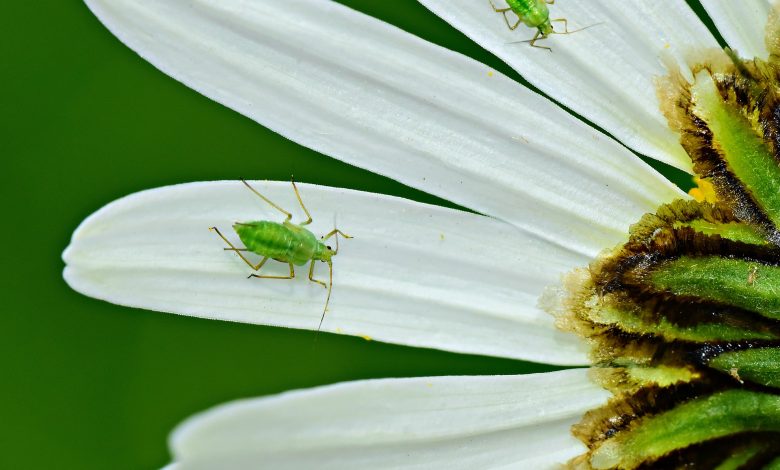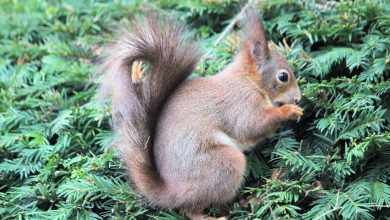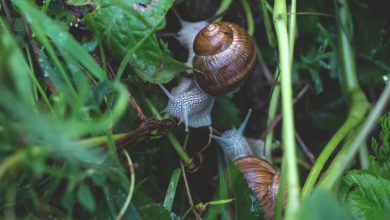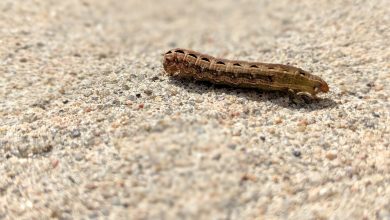How to Get Rid of Pests: Natural Methods

There is no greater happiness for a gardener than a lawn full of delicious vegetables and perfect-looking flowers. However, the main challenge is that many garden pests and bugs consume the vegetable and flower beds as salad bars or free accommodation. The good news is that there are numerous ways to eliminate pests in the garden through natural and organic methods. They are proven to be active and safe for more than hundreds and even thousands of years. Instead of using toxic chemical products to eliminate garden pests, gardeners should ideally choose sensible ways and use natural methods to keep their gardens healthy and free of pests. That said, they have a result of more robust plants and an overall healthier environment.
Before we get down to business, let’s get close up and personal with the most common garden pests. Like they say, “know your enemy.” Here are the ten most common garden pests guilty of destroying your beautiful plants.

Most Common Garden Pests
Aphids
You know your garden plants have aphids if you notice puckered leaves and stunted growth. Aphids are 1/6 of an inch and are pear-shaped pests that suck out sap from your beloved plants. The annoying thing about aphids is that they attract ants by secreting honeydew, and the ants, in turn, protect the aphids!
Cutworms
These large, unsightly creatures are one inch long moth larvae that can be found underneath the leaves within the top layer of soil during the night. During the day, these chubby creatures feed on plants, specifically the stems. One sign that you have a cutworm problem is if you notice a newly planted seeding felled.
Scales
These insects are high at camouflaging themselves and appear to be small bumps on the leaves of the plant. Female scale insects stay on the leaves, sucking the plant sap, causing the plants to weaken and foliage to turn yellow. Scales not only destroy your plant from the inside but are unsightly.
Japanese Beetles
These pests are beautiful yet terrible. Adult beetles have a metallic blue-green color and are about 1/2 of an inch in size. The larvae of Japanese beetles are white grubs with brown heads. Both the adult and the larvae feed on the roots of grass and other plants. They chew on flowers and leaves leaving your plants bare. Just thinking about these nasty creatures makes me mad.
Slugs
Slugs are the epitome of pests. From their slimy appearance to their soft bodies, they give most people the creeps, and rightly so. Slugs can either be brown or grey and do most of their feeding during the night. These slimy suckers have no mercy and will feed on any plant, leaving ugly holes in the foliage. Although they are most commonly found after rain, they can also survive moist, humid climates.
Squash Bugs
These pests are a lot ‘classier’ and only stick to squash plants, including pumpkins. They are huge and appear like they have armor, resembling stink bugs. Squash bugs wreak havoc on squash plants by sucking out juices and causing wilting.
Spider Mites
As their name implies, these tiny pests are related to spiders and feed on plant juices. When they group in large numbers, they can sap all the life out of plants and cause leaves to turn yellow and drop off. If you see delicate silk webs underneath the leaves, you know you have spider mites to worry about.
Tomato Hornworm
These striped caterpillars with horn-like tails can give you goosebumps just looking at them. They resemble a horrible creature or alien-like insect from a sci-fi movie and act like them too. Although targeting primarily tomatoes, these hornworms can also eat the foliage of peppers, eggplants, and potatoes.
Squash Vine Borders
These pests are more challenging to identify because they destroy your plant from the inside. You will notice excessive wilting, swollen stems, and a pile of sawdust-like material on the ground. Squash vine borders are about an inch long and can quickly strip your plant of needed moisture.
Whiteflies
These pests are closely related to aphids and are also known as Aleyrodidae. They are little white flying bugs that can be as small as 1/12 of an inch, making them challenging to identify. They are often found in clusters underneath the leaves. Whiteflies prefer to suck on ornamentals and warm-weather vegetable plants.

Natural Ways to Get Rid of Pests
Now that we have identified the enemy, it’s time to gear up and wage war against these pests. Here are fourteen of the most effective natural methods to get rid of garden pests.
The majority of garden pests can be stopped with reasonably non-toxic sprays.
One of the most comfortable and most convenient ways to remove garden pests is through a forceful spray of water from the hose. Natural alternatives that are made from plant-based extracts, namely sabadilla, pyrethrum, or neem, are suitable replacements to synthetic pesticides. They can be in the form of horticultural oils, insecticides, or insecticidal soaps.
Select the best location and soil for the garden plants you are cultivating.
This method reduces susceptibility to garden pests and diseases, as well as lessens plant stress. Stressors of plants include fertilizer, too much sun exposure, shade, too little sun exposure, and even water. Gardeners must use aged compost to provide the plants all the needed nutrition in the most natural way. Moreover, compost-rich land drains well while holding the moisture of the soil. It is best practice to put a two inch layer of aged compost to your garden two times per year.
Infectious microorganisms, fungi, and bacteria can be utilized to eliminate or kill many garden pests.
Bacillus Thuringiensis (Bt) is the most frequently used microbial insecticide that contains a species of bacteria that has toxins harmful to several common insects and garden pests. You must consult with a local nursery or agricultural garden facility for recommended microbial insecticides or pesticides.
Select resistant plant varieties.
Verify seed packages and plant labels for pieces of information related to plant resistance, diseases, and pests. Websites and seed grower platforms provide lists of plant diseases and resistance. If you want diversity in your garden, you can mix plant families. This method will help eliminate the rapid infestation of bugs or pests that attack particular plant varieties. You can keep a journal for your garden and indicate vital information such as garden problems and resolutions for future reference.
Not all insects are harmful to your garden.
Some provide help in eliminating these garden pests. Make room for beneficial insects to take up space in your garden. Trichogramma wasps, praying mantis, soldier beetles, lacewings, and lady beetles assist in controlling harmful insects in the garden. Cultivate plants that will produce pollen and nectar to attract beneficial insects. Caraway, herbs dill, lemon balm, spearmint, and fennel are suitable plants to lure them in your garden.

Pruning or pinching can eliminate diseased and damaged branches and leaves.
It is crucial because weak and small seedlings are more likely to be infected. It is ideal to remove unhealthy and dead plants from the garden immediately to avoid further damage to the rest of the plants. Also, it increases the circulation of air and sunlight in the garden.
You can remove insect pests from plants through handpicking.
Caterpillars, egg masses, slugs, giant adult insects, and snails can be handpicked from your garden. Once picked, drop them into soapy water. Moreover, shake tiny insects from leaves of the plants onto a piece of paper or small plastic and throw them.
Use olfactory lures and visual lures to trap insects.
Earwigs are attracted to damp and rolled newspapers; snails and slugs are attracted to the yeast in full pans containing beer; and cabbage worms, whiteflies, thrips, and cucumber beetles can be controlled by yellow sticky boards.
Gardeners can utilize common barriers.
Copper strips, sticky bands, or floating row covers all act as pest barriers to eliminate pests from planting beds and plants. A ring of tar paper or cardboard established into the soil around plants will reduce slugs and cutworms.
Maintain the garden clean of the debris of plants.
Garden pests generally shelter and hide in dead leaves. Turn the soil between plantings to uncover pests to the elements.
Purchase pest-resistant and disease-resistant seeds from a reliable supplier.
There is a saying that goes “prevention is better than cure,” as well as it is cheaper; therefore, it is better to eliminate these garden pests before they arrive in your garden. When looking for seeds in the catalog, find varieties with the letters V, F, N, or T after the seed’s name. The letters indicate the seed’s most resistant factor to a specific problem. N is for nematodes; V and F for verticillium and fusarium; and T is for tobacco mosaic virus.
Eliminate weeds whenever needed.
Weeds equally compete with garden plants for water, sunlight, and nutrients. Also, they often attract parasites and garden pests. Be sure to remove weeds and their roots entirely out of the soil.
Water your garden plants and vegetables early in the morning.
Plants mainly need water to aid with photosynthesis, which happens during the day. It is not ideal to water them at a later time during the day since the leaves will dampen during nighttime. That said, it promotes a condition for fungus and other plant diseases. When watering the plants, soak the roots instead of just getting the foliage wet. A sound investment for gardening includes drip hoses or soaker.
Do not grow the same type of crop in the same location every year.
Garden bugs will attack the same produce and live there, waiting for the next batch to damage. Crop rotation helps maintain vital soil nutrients from being detrimental. For example, grow legumes (providing nitrogen into the soil) where you last cultivated tomatoes, squash, or corn crops for depleting the nitrogen into the ground.
Organic Materials To Combat Your Pest Problem
Aside from natural techniques to get rid of pests in your garden, there are home remedies that you can use for eliminating them that come handy and safe. Instead of buying expensive, toxic, and harmful pesticides, you can use organic materials to keep your garden free of bugs and pests.

Bananas
If you have roses in your garden, bananas are excellent protection against aphids. They are good sources of potassium, which is an essential nutrient for yards. Also, they attract butterflies and birds, so make sure to have some bananas out on a bird feeder. Try putting a few pieces of dried banana skins under the surface around the rose bushes. Place banana skins to the compost heap and blend them into the soil with a fork or dig and bury dried banana peels a few centimeters around the base of the bushes of rose.
Cedar Oil
If you have pets at home, chances are they are carriers of fleas into your garden. Make sure to have a cedar oil or aromatherapy oil at home. Add a couple of drops on a soft clean cloth and wipe all over your pets once a month to control any flea infestation. Also, you can put a few drops of cedar oil on your rugs and pets bedding. Cedar oil also eliminates moths; therefore, you can add some drops to a potpourri container and place it into your closet or drawers.
Balsamic Vinegar
A spray bottle with aged balsamic vinegar content is a suitable herbicide for weed problems in pavers in a driveway or in between bricks. Spray some vinegar on your plants, and it will wither away. The acetic acid content found in the vinegar kills off the weeds; therefore, the higher acetic acid content, the better for your gardening remedies.
Pure Soap
A Castile soap, a vegetable oil-based soap, is a gentle and effective insecticidal spray that comes handy for your gardening needs. Fill up a spray bottle, i.e., a reused household cleaner container, with one tablespoon of peppermint Castile soap and water to eliminate aphids and whiteflies in your garden.
Manure
Manure is a good source for flower production and boosting growth as a yearly treatment for any lawn and garden. Organic fertilizer and manure are readily available in local stores, and garden centers can be mixed into flower beds or dressed onto the garden. By providing additional nutrients to the soil, healthy plants have higher chances of fighting off diseases and increase their resistance.

Marigolds
Marigolds act as a natural insect repellant and will protect its surrounding areas from pests and bugs. Be sure to plant marigolds when cultivating a herb garden or vegetable patch.
Diatomaceous Earth
Diatomaceous Earth contains fossilized remains of single-cell, diatoms organisms. It is considered one of the oldest forms of pesticides. The sharp surfaces wound the insect cuticle, and the insect eventually dies of dehydration. It kills snails, ants, and slugs. It must only be applied to problem surfaces to avoid eliminating beneficial insects and helpful garden occupants. You can buy diatomaceous earth at your local garden center or nursery.
Ash
Slugs and snails do not like lime, ashes, and sand. If you have a wood braai, put ash to the base of plants that are under attack.
Eggshells
Eggshells act as fertilizer and pest repellant when placed to the bottom of holes before cultivating. It also acts as great content for the compost heap. Crush eggshells and place them underneath the hole when planting vegetables. The sharp surface around its edges will eliminate cutworms, and crushed eggshells around the plants’ stems will remove snails and slugs.
Garlic
Put a clove of garlic into a blender and place one cup of water and mix until finely blended. Reuse an empty household cleaner spray bottle and put the garlic puree, and then add more water. When sprayed onto garden plants, it acts as a deterrent. It is 100 pecent safe to the leaves of the plants compared to other insecticidal garden sprays.

The fact is, pests are challenging to get rid of, and if you think about it, they too need to survive. So before you put on your battle face and get down to destroying them, it is wise to decide whether you can tolerate them. Many gardeners choose to tolerate pests if their damage is minimal. This is mainly because getting rid of pests may also mean getting rid of beneficial pollinators and predators. As long as you stick to the natural pest remedies, other beneficial insects should be safe.
The only way you will know whether or not you are willing to share your plants with pests is to be a vigilant gardener. You can’t leave your garden unattended and expect to have a pest-free environment. Closely monitor your plants, checking the undersides of leaves, the color of foliage, and other factors that are indicators of pests. Here are a few signs you should look out for:
- Folded leaves
- Chewed leaves with slime trails
- Leaf mines or white patterns on leaves
- Rolled leaves
- Deformed leaves
- Discolored leaves
- Chewed or skeletonized leaves
- Leaf galls or abnormal plant growths
If you decide that you’ve had enough with the pests and cannot deal with the amount of damage they are doing, start with the natural remedies mentioned earlier. With a little diligence and consistency, these natural methods will often be enough to put an end to your pest problem.
In most cases, using pesticides is a last resort because they are so dangerous and persistent. However, if you have a considerable infestation (like a pest has eaten half the leaves of your plant) and none of the natural methods worked, pesticides may be your only hope. If the worse comes to the worse, and this is necessary, be sure to get professional advice on how to use pesticides in the most eco-friendly way possible.
Pests may be cunning, annoying, and persistent, but you are far smarter than them. Nature has given you all the weapons you need to keep pests at bay and ensure that your beloved garden flourishes.



